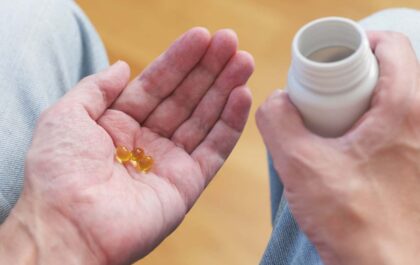Table of Contents
Introduction
If your toenails are very thick – more than usual, it could indicate a fungal infection or an underlying condition. Check out these expert-approved solutions.
Why Are My Toenails Thick?
Since you probably don’t examine your feet every day, especially during the cold season when they switch from one pair of socks to another, you may be surprised to discover that your nails have become thicker. You will probably notice the change by trying (possibly with difficulty) to cut them. Thick toenails are often part of the minor disadvantages of ageing, such as acrochordons, brown spots and wrinkles.
But what if your nails, in addition to being thick, were accompanied by other problems, such as a yellowish tint and curvature in the nail or redness and swelling of the skin around the nails? Toenails (as well as fingernails) can give clues about your overall health. Thickening toenails are a way to tell you that something is wrong.
Moreover, even the feet themselves can be indicative of diseases. Here are some reasons why you have thick nails, the other symptoms that come with them, and what you can do to treat them.
Onychomycosis
A fungal infection of the toenails, or onychomycosis, is one of the most common causes of thick nails. A parasitic fungus can penetrate under the nails or next to them, or through an injury to the skin. It can happen when an infection, like an athlete’s foot, travels to the nails.
For example, it can settle when your feet spend a lot of time in shoes where they sweat and are cramped or walking barefoot in warm and humid places like changing rooms and by the pool. Learn about these infections that you can catch at the gym.
What Happens To Toenails?
The nails appear thick, with yellowish discolouration and tiny cavities. The nails can also lift from the nail bed.
Treatment
There are no effective over-the-counter treatments for nail psoriasis because creams and ointments cannot get into it. “Often, patients will need injections or oral medication. These may include corticosteroids, corticosteroid injections, some retinoid creams to apply to the nails, or a psoriasis medication. It’s also a good idea to keep nails short and avoid injuries.
Paronychia
Paronychia is an acute infection or inflammation that appears around the base of the nail (area near the fold of skin or cuticle). It can happen when a bacterium or fungus invades the skin. Other risk factors include poor blood supply to the toes, diabetes and a deficient immune system.
Redness and inflammation will appear around the base of the nails, often making them sensitive to touch. In addition, tiny pockets filled with pus can form under the cuticle. Toenails (and fingernails) can become thick, deformed and striated as they grow.
Treatment
A painful infection with the presence of pus requires a visit to the doctor. He will probably prescribe an antifungal cream twice a day for a few months. If paronychia is severe, your doctor may prescribe an antifungal medication to control the infection quickly. Observe your body: your skin can reveal symptoms of the disease.
Onychogryphosis
This medical term commonly refers to a nail that has the appearance of a ram’s horn because it thickens and curves like a ram’s horn. “Onychogryphosis is an underlying condition of nail tablet growth,” says dermatologist Pooja Sodha, director of cosmetic dermatology at George Washington Medical Faculty Associates in Washington.
It usually attacks the big toes. The elderly and those with poor oral health are more prone to ram horns. It can also be hereditary. People with diabetes and blood circulation problems may be at higher risk of having ram horns. Do not hesitate to follow these podiatrist tips for the health of your feet.
What Happens To Toenails?
You will notice a significant thickening of the nails accompanied by an opaque yellowish-brown discolouration. You will not wake up overnight with ram horns. It only happens if the condition is not treated for a long time.
Treatment
Being very painful, ram horns should be diagnosed and treated early. “Patients can develop secondary nail infections and onychomycosis, which can be associated with painful ingrown toenails,” according to Dr Sodha. Therefore, the initial treatment focuses on decreasing the thickening and curved growth of the nails.
A podiatrist or dermatologist will likely use nail clippers, rotary cutters and casters with products like over-the-counter urea cream to soften nails. Then, a doctor will treat the underlying cause, such as psoriasis or fungal infection.
After trying one of these natural remedies, you will no longer have swollen foot.
Ageing
Toenails do not always become thicker with age. They may even slim down or stay the same, according to Dr Sodha. If changes occur, it’s likely due to reduced blood supply to the toes, nail care habits like washing or polishing, trauma, or ill-fitting shoes. Remember to check if your sneakers are excellent or bad for your feet.
Slightly thicker toenails don’t pose an immediate risk to your health, but they’re harder to trim. And when nails are harder to decorate, you can accidentally cut them too short or pierce the skin, making them more vulnerable to infections or fungus. (It’s even more dangerous if you have diabetes.)
How To Prevent Thick Toenails
Even though cutting your toenails sounds simple enough, it’s not as simple as you might think. To help you keep your nails in good condition, follow these steps. They will make cutting thick nails easier and help prevent fungi and ingrown toenails.
Soften the Toenails
If possible, trim your nails after taking a shower or bath. Or soak them first for a few minutes in warm water. You can also soften them overnight before cutting them. Before going to bed, apply Vaseline, put on a pair of socks, give yourself a good night’s sleep, and your nails will be softer when you wake up.
Use the Appropriate Instruments
Always use a nail clipper. Disinfect it once a month (or after use by someone else). Soak a small brush in a bowl of rubbing alcohol (70-90%) for about 5 minutes. Use the brush to rub the nail clipper, then rinse it with hot water. Make sure it is scorched before you use or store it.
Related posts
Featured Posts
Exploring Advanced Techniques in the Laser Engraving Machine: 3D, Texturing, and Multi-Layered Designs
Many industries have spoken for the laser engraving machine because of its results and versatility. But recently, many advancements have…
Benefits of Vitamin D
Introduction One cannot live without the benefits of vitamin D because its virtues are essential for good health. But do…


